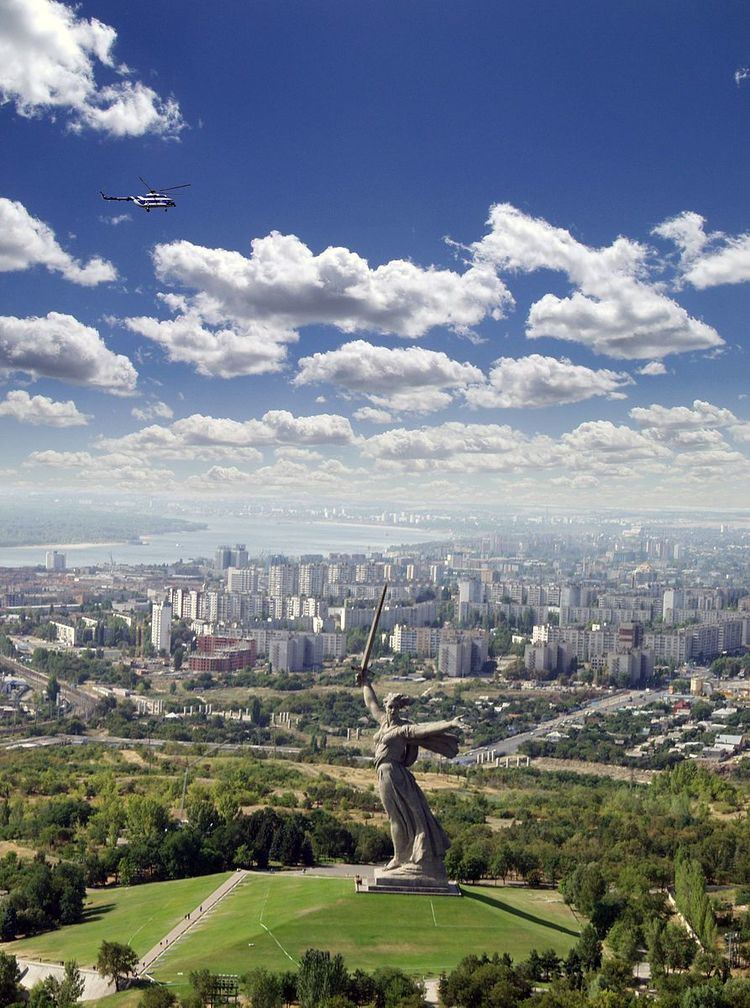Unveiled 15 October 1967 Phone +7 844 223-67-23 | Opened 15 October 1967 | |
 | ||
Similar Mamayev Kurgan, Mother Motherland - Kiev, The museum‑panorama "The Battl, Pavlov's House, Hall of Military Glory | ||
The Motherland Calls (Russian: Родина-мать зовёт!, Rodina-mat' zovyot!, literally Homeland-Mother Is Calling) is a statue in Mamayev Kurgan in Volgograd, Russia, commemorating the Battle of Stalingrad. It was designed by sculptor Yevgeny Vuchetich and structural engineer Nikolai Nikitin, and declared the largest statue in the world in 1967. Today, it is the tallest statue in Europe and the tallest statue of a woman in the world, not including pedestals.
Contents
The Motherland Calls is highly complex from an engineering point of view, due to its characteristic posture with a sword raised high in the right hand and the left hand extended in a calling gesture. The technology behind the hollow statue is based on a combination of prestressed concrete with wire ropes structure, a solution which can be found also in another work of Nikitin's, the super-tall Ostankino Tower in Moscow.
The monument was inspired by the Ancient Greek sculpture the Winged Victory of Samothrace, and was modelled on a local woman, Valentina Izotova.
Construction and dedication
When the memorial was dedicated in 1967 it was the tallest sculpture in the world, measuring 85 metres (279 ft) from the tip of its sword to the top of the plinth. The figure itself measures 52 metres (171 ft), and the sword 33 metres (108 ft). Two hundred steps, symbolizing the 200 days of the Battle of Stalingrad, lead from the bottom of the hill to the monument. The lead sculptor was Yevgeny Vuchetich, and Nikolai Nikitin handled the significant structural engineering challenges of the 7,900 tonnes (7,800 long tons; 8,700 short tons) concrete sculpture. The statue appears on both the current flag and coat of arms of Volgograd Oblast.
Marshal of the Soviet Union Vasily Ivanovich Chuikov is buried in the area of the monument, as is famous Soviet sniper Vasily Zaytsev, who killed 225 Axis soldiers in the battle of Stalingrad.
Structural problems
In 2009, reports said the statue was leaning due to changes in groundwater level causing movement of the foundations. The statue is not fixed to its foundations and is held in place only by its weight. An anonymous official claimed that it had shifted 20 centimetres and was not expected to move much farther without collapsing. A program of monument restoration was developed in 2008–2009, and comprehensive conservation and restoration work started in 2010.
